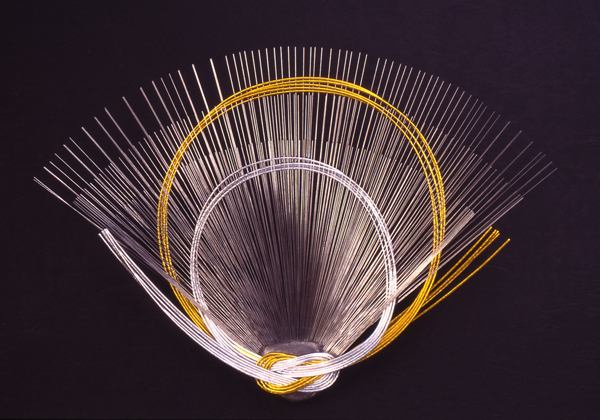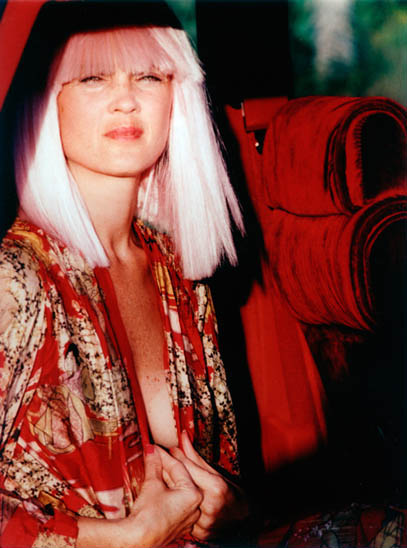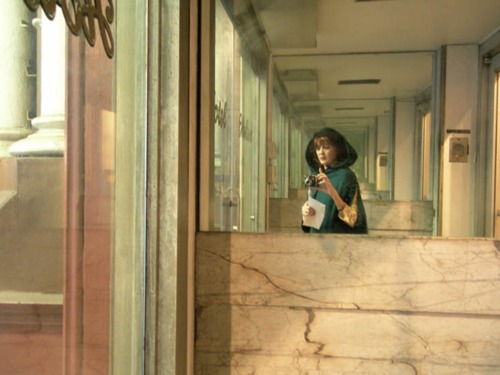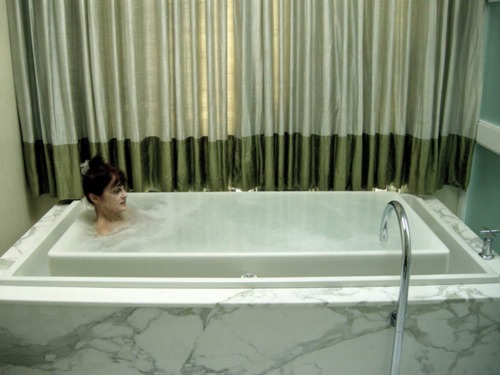From 1980 to 1995, Laura Levine—a self-taught, multidisciplinary artist and photographer—immortalized herself in the rock and roll lexicon with her startling portraits of the period’s most notable faces and personalities. Hers was a period when MTV still played music videos, rockstars walked among us with abandon (and without fear of insidious mobile phone uploads) and a Rolling Stone cover made kings of men, and all overnight.
Best known for her black and white portraits of everyone from Madonna to James Brown, Levine’s images capture a raw yet elevated essence of those iconic visages that we have come to know, love and perhaps hate. Levine sits down with The PhotoSynth Project to discuss her life as a professional photographer, then and now. Her latest exhibition Musicians, a retrospective, debuts tonight, July 21st, at the Stephen Kasher Gallery, Chelsea, NYC.

Afrika Bambaataa NYC 1983 © Laura Levine
PS: What inspired you to pick up the camera?
LL: I‘d seen a Diane Arbus exhibition at the Museum of Modern Art when I was fourteen, and walked out of the museum thinking, “I want to do that.” Her work absolutely inspired me. I signed up for an after-school darkroom class, borrowed my dad’s Konica camera, and started taking street pictures in my Lower East Side neighborhood.
PS: As a multidisciplinary—and self-taught artist—which was the initial medium, experience, or interaction with the art world that made you consider the depth of your creative ability, and confident in its range?
LL: Although I’ve worked in photography, paint, film and animation, I started out in still photography and that’s probably the medium I still feel most connected to and most confident about. Once I started to be regularly published in magazines and included in gallery shows, I felt pretty secure that my work was going to be taken seriously. Being included in a show at MoMA this past year certainly was a nice confidence boost!

Lene Lovich, NYC, 1981 © Laura Levine

Tina Weymouth & Grandmaster Flash NYC 1981 © Laura Levine
PS: Music and Photography. Is this is a difficult marriage? What difficulties did your subject matter pose to you personally, as an artist? To the industry as a whole?
LL: When I first started to photograph musicians it was usually a very intimate one-on-one situation and smooth sailing (aside from the occasional hung-over subject). But as the record industry changed, there were often too many cooks in the broth: label reps, fashion stylists, managers….at times there’d be as many as ten other people in the studio during the shoot, each with an agenda or an opinion, and I found that to be stifling and counter-productive to creativity.
Though I understand that they had needs as clients. The difficulty was rarely with the artists themselves, but with the infrastructure. The music industry was putting more emphasis on packaging their artists (style over substance), and as that began to happen with more frequency, I left.

Madonna NYC 1982 @ Laura Levine
PS: Your subjects are what many would call “iconic;” though, arguably, no one can become an icon without a Rolling Stone cover, and an unforgettable image. Does a great rock photographer make a great rock star; the chicken or the egg?
LL: Without a doubt it’s the iconic rock star the makes the iconic rock star. I don’t think there’s any one photographer or image that could take the credit for making a rock star “iconic.” That said, I do think certain images are iconic and they can add to the aura. I’m not sure how relevant a Rolling Stone cover is anymore. (Is it?).
PS: What’s up with the curtains?
LL: You know, I hadn’t noticed that until I put together this grouping of images and noticed Madonna and Siouxsie side-by-side! In the case of Siouxsie, we shot that in her room at the Gramercy Park Hotel, and there weren’t a lot of visual possibilities, so I worked with what I had. Hey, out of five hundred sessions, two with curtains isn’t so bad!

Boy George London 1982 © Laura Levine

Public Image Ltd., NYC, 1981© Laura Levine

Henry Rollins NYC 1993 © Laura Levine
PS: You haven’t shot since 1994; arguably the most interesting time for musical documentation a la MTV, when it was actually Music Television. Audiences only familiar with their favorite artists on album covers and live in concert now had access to them via music videos, interviews, and rockumentaries. What is the value of Rock Photography to the music industry today? Is there a place for it in a post-MTV and CD world?
LL: I firmly believe that nothing has greater visual power than one great still image – not TV, not videos, not rockumentaries. People remember certain frozen moments in time.
PS: Why did you use black and white photography so often in your portraits? For you, what is the aesthetic value?
LL: The practical reason is that I was able to develop the film and make the prints myself, at home. Aesthetically, I’ve always preferred black and white over color. It gets to the gist of the picture without the distractions of color. It’s timeless and classic.
PS: Being self-taught, who guided you through the technical aspects of photographic production—who were your mentors?
LL: I used to develop all of my film and make my own prints in the darkroom in my loft until the mid-Nineties. I learned darkroom basics when I was a teenager, at the Henry Street Settlement down the street. My teacher, Nestor Cortijo, was a photographer himself, and I learned so much from him.
My other mentor was Fred McDarrah, the photo editor at the Village Voice and a wonderful photojournalist who had covered the Beats. I did an internship with Fred at the Voice after I graduated from college, and among other things, he taught me priceless information about how to protect my work and stand up for my rights as a photographer. There’s a group of us – former Voice interns – who all owe a huge debt to Fred.
PS: Do you still print your own photographs?
LL: I now entrust my silver gelatin printing to LTI-Lightside (formerly 68 Degrees), a wonderful b/w lab in midtown. Kent is a master printer who has printed my work for years…I miss making my own prints – I really do – and would love to get back to it someday. I was a pretty good printer!

R.E.M. Walter's Bar-B-Que Athens GA 1984 © Laura Levine

Alan Vega NYC 1983 © Laura Levine
PS: What is the best concert you have ever been to? What makes a great musical experience?
LL: The best shows have been the ones where I feel like I’ve been levitated off the ground. Al Green on the river in Memphis did that once.
PS: You inserted yourself into a subculture fueled, as the saying goes, by “drugs, sex and rock and roll.” What was the most difficult lesson you learned, working within this industry?
LL: Hang on to my originals!
PS: How does fame change people, for the better or worse?
LL: I’m still not sure if it changes people or perhaps just the people around them.

Captain Beefheart NYC 1980 © Laura Levine
PS: What drew you from the camera, and to illustration and film? When did you know, or feel, that it was time to walk away—at least for now?
LL: When stylists and make-up artists started to become more important than the musicians or the photographers, I decided it was time to move on. I wasn’t a fan of that month’s fashion trends being imposed on such creative artists (unless, of course, it was a fashion shoot). At the same time, I’d started to paint and was enjoying the independence, the freedom, and even the colors. That was in 1994, about fifteen years into it.
PS: What projects are you currently working on, or have an idea of working on? What, in essence, excites you these days?
LL: I’d very much like to put together a book of my work.
Musicians will be on view July 21 through August 19, 2011 in conjunction with Rude and Reckless: Punk/Post Punk Graphics 1976-1982 at the Stephen Kasher Gallery, 521 W 23rd st, NYC




















































































